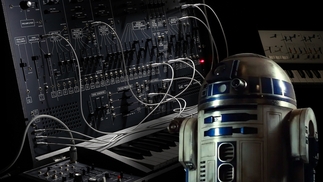Student designs synthesiser inspired by the abacus, Abacusynth
It can be used to "explore the building blocks of audio synthesis", with a free Ableton Live plugin now available

A university student has designed a new synthesiser for their thesis, inspired by the mathematical abacus.
Dubbed Abacusynth, the project is the work of Elias Jarzombek, and comprises a wooden base unit with four horizontal rods, each with a bead that can be pushed from one end to the other, or spin. Movement leads to timbral shifts in the sound produced by the kit, as light sensors calculate the waveform based on direction and position.
“Just like an abacus is used to learn the fundamentals of math, the Abacusynth can be used to explore the building blocks of audio synthesis through its primary interaction: placing and manipulating shapes on rods. This familiar layout facilitates a new way of visualising synthesis that makes it easy and fun to create rich timbres without having to fiddle with lots of knobs and sliders," Jarzombek wrote in a statement on a Bandcamp page that now contains a compilation of tracks made with his invention.
“The spinning interaction takes advantage of physics to illustrate a sonic phenomenon. It's what sets the interaction apart from any software, so it was the first thing I started developing," he continued. "Most synths cater to the ‘Big C’ creator, the professional or virtuoso who requires granular control in order to achieve their goal, and who is either willing or required to learn complex interfaces in order to do so... My target user is a “little C” creator, someone who is being creative just for the fun of it, and is more interested in feeling good while creating, instead of being focused on the outcome."
Currently, just one Abacusynth exists, although Jarzombek has made it clear he would like to extend the project with the introduction of individual modules that could be made commercially available. However, an Abacusynth Ableton Live plugin is already available online, and can be downloaded free of charge.





